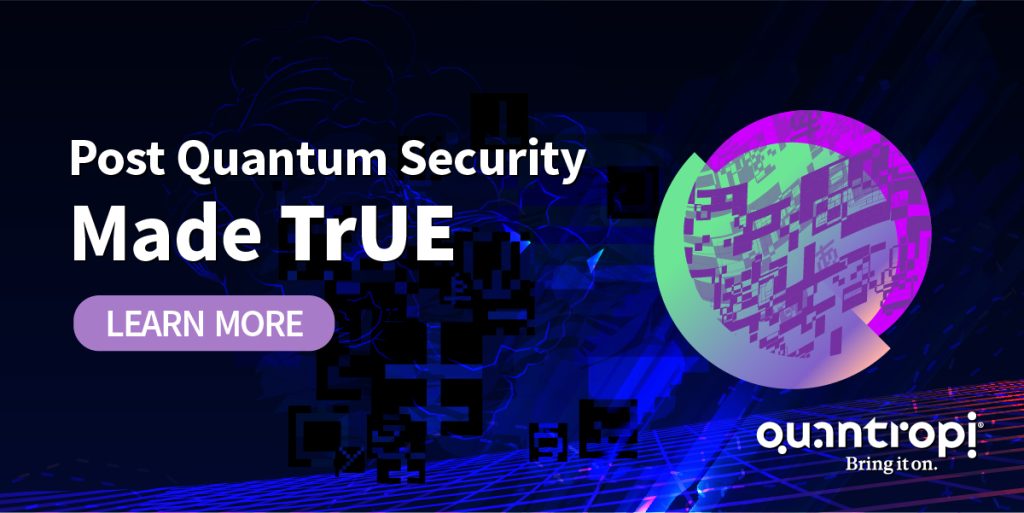Quantum key distribution, or QKD, is touted by some as the future of cybersecurity. It promises impenetrable protection from quantum threats over indefinite time frames, potentially meaning that you could switch to QKD and forget about data breaches for good.
In reality though, QKD isn’t as perfect as some may lead you to believe. While promising, it suffers from a whole slew of issues, one of which is its challenging deployment. There are some other problems with QKD as well that may prevent it from becoming a popular way of protecting data.
With all that said, there’s one variant of QKD that solves many of the issues of regular QKD technologies: digital QKD.
What’s digital QKD, how does it work, and how is it better than other forms of QKD? Read on to find out.
Why Standard QKD Doesn’t Cut It
Before we take a look at digital QKD, let’s have a quick recap of standard QKD technologies. QKD exploits the properties of quantum mechanics and encodes data as qubits. To convert classical bits to qubits and the other way around, QKD relies on photon emitters and receivers. And to exchange the qubits between parties, QKD requires optical fiber cables.
Because QKD works with quantum mechanics rather than math problems (like PQC and classical cryptography do), it’s theoretically protected by the laws of nature. A properly implemented QKD system cannot be infiltrated or cracked with quantum computers, no matter how much power they get.
This sounds great on paper, but QKD has some serious disadvantages. Most relevant to us now, “standard” QKD is purely a physical technology. Unlike PQC, you cannot deliver QKD to your existing network infrastructure via software updates. To protect your corporate network, you must deploy dedicated hardware to support QKD.
Then, there’s also the issue of limited range. With standard optical fiber, QKD can operate reliably at distances of just tens of kilometers. At longer ranges, you’re going to start losing a lot of information.
Low-loss optical fiber can somewhat mitigate this issue, but only up to a point. You are still looking at ranges no longer than a few hundred kilometers. To reliably extend communication ranges further, we need quantum repeaters, which aren’t a thing yet.
For sizeable organizations, setting up QKD communications might involve tens or even hundreds of kilometers of optical fiber cabling. Combine this with the lasers to emit and receive photons, and you’re probably looking at a multi-million project. Not only that, but planning a transition from classical public-key cryptography is a huge challenge of its own.
With all that in mind, classical QKD technologies are extremely inefficient on an organization-wide scale.
Enter Digital QKD with SEQUR™ SynQK
To fully address the issues of QKD while keeping its advantages, Quantropi’s has developed SEQUR™. One of Quantropi’s three TrUE technologies, SEQUR™ provides quantum-safe key generation and digital distribution functionality.
SynQK is the component of SEQUR™ that enables digital quantum key distribution, or D-QKD. To streamline integration into environments supporting the OpenQKD standard, SynQK digital QKD has been designed to comply with the ETSI-014 standard for quantum key distribution.
Why is SynQK D-QKD better than standard QKD technologies? Here are the three main benefits of using Quantropi’s proprietary tech over “vanilla” QKD.
Cost-effective Deployment
SynQK can be deployed to any existing network infrastructure. SynQK delivers quantum key distribution to enterprise networks digitally, eliminating the need for dedicated fiber connections. But perhaps more importantly, there is no need to use special “quantum-ready” hardware to exploit the benefits of QKD – SynQK supports any classical device, be it a laptop or a cell phone.
Effortless Wired and Wireless Coverage
SEQUR™ SynQK supports not only wired but also wireless networks, allowing you to ensure full coverage of your corporate network. No matter where your devices are – on or off premises – they can leverage the benefits of digital entropy distribution for increased protection.
Increased Range
SynQK can operate at far longer ranges than standard QKD. In 2022, Quantropi collaborated with German telecommunications company Deutsche Telekom to benchmark SynQK. The results were more than impressive – SynQK was able to seamlessly run at least 5 simultaneous quantum-key streams at distances from 4,000 to 15,000 kilometers. Communication speeds were recorded at 130-190 megabits per second, exceeding the key exchange rates of all other solutions.
Get End-to-End Quantum-Safe Protection with TrUE Technologies
SEQUR™ is part of QiSpace™ – Quantropi’s flagship quantum-safe enterprise solution. QiSpace™ is the only platform in the industry that conforms to the TrUE pillars of quantum cybersecurity, providing end-to-end quantum-safe protection to enterprise infrastructures. Starting from quantum key generation and ending with securing data at rest and in transit, QiSpace™ has got you covered.
Alongside SEQUR™, QiSpace™ offers quantum-safe symmetric encryption with QEEP™ and quantum-safe asymmetric encryption with MASQ™. QEEP™ is up to 18 times faster and up to 95% more efficient than 256-bit AES while being at least as secure. MASQ™ provides a novel PQC algorithm developed by Quantropi that is much more efficient than NIST candidates. To ensure peace of mind for customers, MASQ™ will also include NIST-standardized PQC systems, starting with the first four algorithms that were approved in July 2022.
To learn more about Quantropi’s cryptographic solutions, contact us today!



